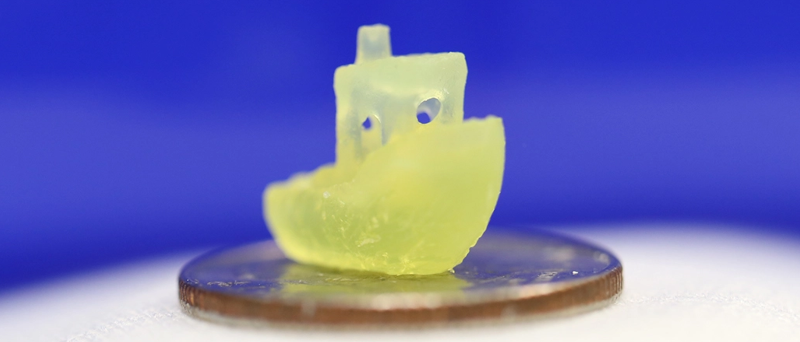
Engineering researchers develop new type of 3D printing
By DE staff
Additive ManufacturingStanford team’s technique removes need for support structures.

A boat figurine produced by a new 3D printing process that makes it possible to print an object within a volume of resin.
(Photo credit: Dan Congreve, Stanford University)
Instead, the laser can be directed to begin the build at any xyz coordinate within the liquid and then expand on it from any angle or direction. In effect, this eliminates the need for solid support structures during the 3D printing process since the part is buoyed by the surrounding viscous resin, the researchers say.
“The ability to do this volumetric printing enables you to print objects that were previously very difficult,” said Dan Congreve, an assistant professor of electrical engineering at Stanford and former Rowland Fellow at the Rowland Institute at Harvard University. “It’s a very exciting opportunity for three-dimensional printing going forward.”
To create this 3D printing process, the research team couldn’t use blue laser light, since not only would the desired point be solidified but also any resin along the laser beam as it entered the resin. In its place, the team used silica-encased nanomaterials, distrubuted throughout the resin. Pointing a red laser at these microscopic capsules sets off a series of energy transfers (called triplet fusion upconversion) that converts low energy red photons into high energy blue photons at a specific point.
While the process currently produces relatively low-resolution parts, the team is looking to improve the process by coordinating multiple lasers simultaneously to increase build speed, reach higher resolutions and create smaller parts. The team says it also looking into other applications for the nanocapsules such as improving the efficiency of solar panels or study biological models that can be triggered with light. The team’s research was featured in the most recent issue of Nature.
www.stanford.edu
